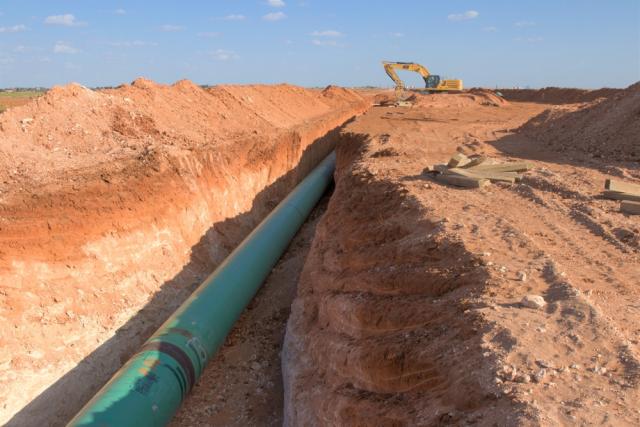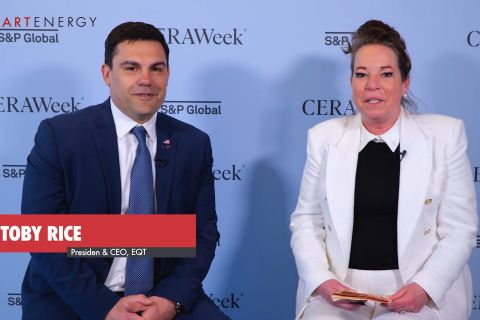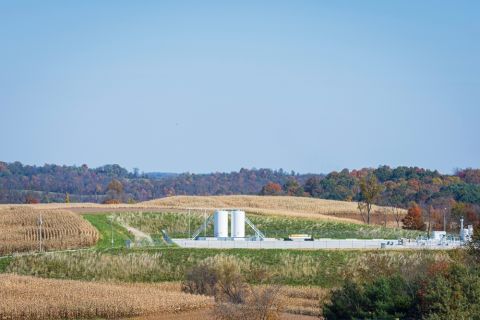
Western, an MLP with midstream assets in Texas, signed a letter of intent with Occidental Petroleum to explore CCUS opportunities within their existing operations. (Source: Shutterstock)
In October, Western Midstream Partners and Occidental Petroleum signed a letter of intent to explore carbon capture, use and sequestration (CCUS) in and around their existing operations in the Texas Delaware and Colorado Denver-Julesburg (DJ) basins. Notably, transport is a foundational part of the initiative, not an afterthought.
The initial intent of the collaboration is for Occidental to explore carbon capture in its upstream activities, and for Western to explore carbon capture in its gas plants and other major gathering and treating facilities. But those are just the starting points for much broader initiatives, including third-party services.
Occidental and Western “intend to consider opportunities to provide carbon-management services to other point-source emitters who are also interested in reducing their carbon emissions,” the companies said. To start, Western will explore CO2 transportation from the two companies’ carbon-capture facilities to Occidental’s CO2 offtake delivery locations. Occidental would design, own and operate new and existing CO2 offtake facilities for sequestration, EOR, or other uses.
Western is an MLP with midstream assets in the Rocky Mountains, north-central Pennsylvania, Texas and New Mexico for gathering, processing and transporting natural gas, condensate, NGLs and crude. The company also handles produced water in the Delaware. In its capacity as a gas processor, Western also buys and sells gas, NGLs and condensate on its own behalf and as an agent for its customers. Occidental owns 50.8% of Western Midstream Partners.
“Our infrastructure in gas, oil and water is all highly utilized,” said Brian Binford, vice president of operations services and sustainability at Western. “So as we look to in-basin opportunities in CCUS, we are most likely going to need additional infrastructure.”
Still, the most important asset that Western may have already in place is its relationship with producers and land owners. “We are in the early stages,” Binford noted. “We will evaluate multiple scenarios for safe, efficient operations. Those will incorporate an economic component for our stakeholders. We recognize the role Oxy already has in energy transition. From there we are looking at how to provide transportation value to our customers. That could also be to peers and other potential sources [of CO2].”
Stressing that in formulating plans Western will “have an eye to [potential future] scale,” Binford added that “the near-term focus for CCUS development is on sustainability. We are being very methodical around our priorities, with an emphasis on the DJ Basin and West Texas Delaware. Adjacency is very important to us.”
Financing CCUS
Financial development is an equally important initiative with Occidental, said Kristen Shults, senior vice president and CFO. Noting that CCUS funding is based on tax credits rather than billing customers, “this will be a bit different from our existing operations. Part of the letter of intent with Oxy is to evaluate how payments and funding will work. It will be interesting to be sure. Oxy is our largest unit holder, and the largest producer on our system, so the two organizations know each other well,” she said.

Binford added, “the letter of intent is about framing both the technology and the commercial aspects” of CCUS midstream.
Noting that the midstream majors have some advantages in developing CCUS, Stephen Ellis, senior analyst and equity strategist for U.S. and Canadian midstream at Morningstar said that “the smaller companies absolutely do have opportunities. Those are just different and appropriate to their operations and geography.”
To that point, Ellis lauded the operators of all sizes that are reviewing their operations for opportunities in CCUS.
Commitments, targets and non-targets
He reviewed the carbon-reduction targets of all the companies he follows. “About a third have committed to net zero by 2050. Another third have stated goals, but not made commitments. And a third have zero goals at all. Part of that is because the industry is unsure yet of what works as a business case. That is why there is a lot of noise, a lot of mixed messages around carbon capture.”
From an investment perspective, Ellis said that many companies seem to be focused on efforts to reduce emissions, and also that new incentives for hydrogen have piqued interest in that segment.
“Oxy got a lot of attention for its direct-air capture project,” said Ellis. “From the investment perspective, people are finding that interesting. They are taking note and hope it works.”
Broadly, “the Canadians do have an edge on the U.S. operators,” Ellis added. “One important reason for that is that they do have a carbon tax, that will reach CA$170 by 2030. Looking at what that has driven the Canadian midstream and U.S.-Canadian producers to do, the carbon tax has been effective.”
It is very important to figure midstream costs into CCS development, said Mhairidh Evans, head of global CCUS research, Wood Mackenzie. She prefers ‘CCS’ to ‘CCUS’ because actual use opportunities are rare.
“The first consideration has been cost of capture, and more recently there has been focus on the cost of sequestration,” Evans said. “And as we talk about scale up for CCS, we are talking about new destinations for sequestration, and new sources of CO2 beyond the large concentrations. Midstream is going to have to pick up all along the way. An ethanol plant here, a power station there, a refinery down the road. All of those different sources need strict entry specifications and management, and all that has cost in addition to capex. Midstream operators are experts at all of that.”
On an accounting basis, Evans noted that the increase in the U.S. tax credit from $45 per ton to $85 “is a huge leap forward, on a global level. That definitely allows for more cost in the midstream.”
However, CCS may not be for all operators. “It is incumbent for midstream companies to know their customers,” said Evans. “How much can they do in terms of technology? What value do they attach to CCS? What are they able and willing to pay? The answers are different for every current shipper and every generator that could be a customer. Even within a given shipper or generator, the answers can vary by site.”
More broadly, Evans explained that worldwide “there are rapid changes in CCS and different types of business models are emerging. In Europe, transport and storage are being developed together, and that simplicity is attractive to emitters. Transport is also being developed as a state asset.” That is different from the privately-led development in the U.S. and from the hybrid state-fostered but privately run model in Canada.
Recommended Reading
CEO: EQT Positioned to Meet Demand of Power-guzzling AI Data Centers
2024-04-01 - EQT Corp.’s Toby Rice said demand for AI could exceed the power demand required to meet U.S. residential demand and jump 20% by 2030, in this Hart Energy Exclusive interview.
EIA: Permian, Bakken Associated Gas Growth Pressures NatGas Producers
2024-04-18 - Near-record associated gas volumes from U.S. oil basins continue to put pressure on dry gas producers, which are curtailing output and cutting rigs.
Analyst: Chevron Duvernay Shale Assets May Sell in $900MM Range
2024-01-29 - E&Ps are turning north toward Canadian shale plays as Lower 48 M&A opportunities shrink, and Chevron aims to monetize its footprint in Alberta’s Duvernay play.
Life on the Edge: Surge of Activity Ignites the Northern Midland Basin
2024-04-03 - Once a company with low outside expectations, Surge Energy is now a premier private producer in one of the world’s top shale plays.
Analysts: Why Are Investors Snapping Up Gulfport Energy Stock?
2024-02-29 - Shares for Oklahoma City-based Gulfport Energy massively outperformed market peers over the past year—and analysts think the natural gas-weighted name has even more upside.





